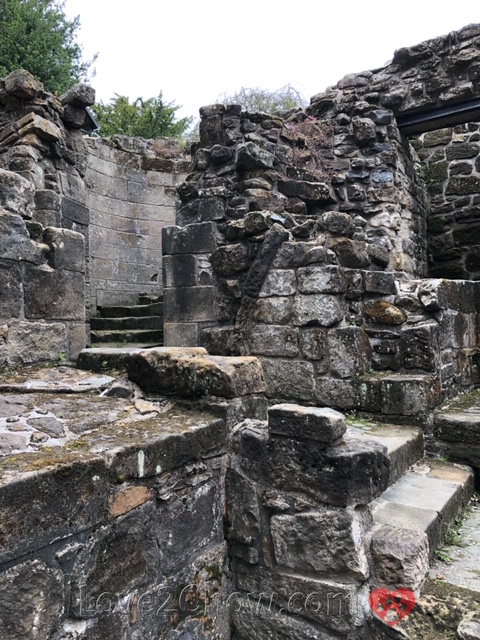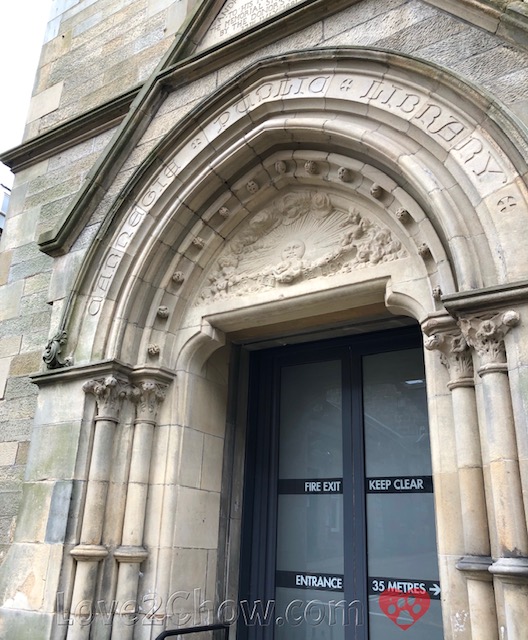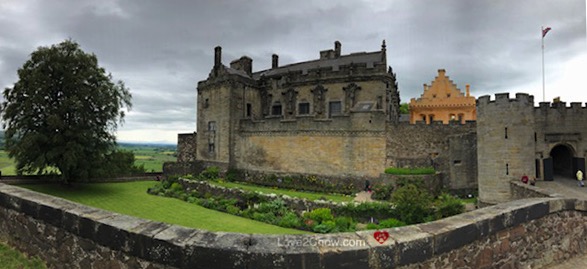Beyond Edinburgh by Car: Dunfermline Abbey, Castles, the Roman Frontier and a Neolithic Mound
By choosing sites that were closer to Edinburgh, we were able to see lots of history, ranging from an odd neolithic mound near the Roman frontier to large and small castles, a palace by an abbey and an unexpected connection to Pittsburgh -- all amidst a whirlwind of green fields, narrow lanes and too many traffic circles!
 |
| Dunfermline Abbey, Refectory and Palace |
 |
| Queen's Inner Hall at Stirling Castle |
 |
| From top of Cairnpapple Hill |
Day 3. To the North and West to see as much as we could
Dunfermline Abbey & Palace (and the original Carnegie Library)
 |
| The refectory with two layers of undercroft |
 |
| Queen Anna's palace, formerly a 13th-14th century monastic guest house |
 |
| The Anunciation Stone |
 |
| Grave of Robert the Bruce, beneath a brass marker gifted by the Earl of Elgin. |
 |
| The first Carnegie Public Library |
Castle Campbell & Gardens
Stirling Castle
 |
| Royal Palace, Great Hall & the central Gatehouse |
 |
| Inside the Great Hall |
 |
| Replicas of the Stirling Heads in the King's Presence Chamber |
Antonine Wall: Rough Castle Area
Back on the main highway, we drove past the Kelpies around 6 pm. These 100 foot tall sculptures honor legendary shape-shifting water spirits that had the strength and endurance of 10 horses.
Cairnpapple Hill: A late Stone Age Henge
 |
| Our rental car outside Linlithgow Palace |
We were very pleased with our first day driving around the countryside. Each site that we visited was enthralling for different reasons, and the flexibility of being able to stay a bit longer at some sites and push others off to the next day was very appealing.
 |
| Locations of places visited on our first day of driving are marked in purple. Dark grey markers show locations of Arnold Clark and the two possible Park & Ride lots. |
Celtic Legend Ltd Car Rental
Request an online quote, and the Rental Team will contact you. They are very responsive to questions, and the entire process was very smooth.
Phone: 0131 458 1501
Earliest pick up: 8:00 am; Latest drop off: 5:30 pm (17:30)
🐾 Check the City of Edinburgh website for a list of Park and Ride lots. I found two with free overnight parking that were convenient to where we wanted to drive: the Sheriffhall and Hermiston locations. There are carparks in the city, but these may require prebooking and cost over £30 for overnight parking.
🐾The Historic Scotland Explorer Pass is highly recommended if you will have a rental car and plan to visit both Edinburgh and Stirling Castles. Download the Explorer pass leaflet or download the free app to plan out your itinerary. Order directly from the Historic Environment Scotland website to avoid mark ups by tour companies selling the same pass. For student discount (concession price), they accept a current student ID or admission letter to college. Using only one full day and two half days on the 5 day pass, we saved £20.50 per adult and £16.80 per student on entry fees.
🐾 With Google Maps, you can mark sites of interest, and then download maps for offline use on the iPhone. We kept our phones in airplane mode for the entire trip, but were able to get driving directions/navigation with no problems. The Historic Scotland app worked seamlessly with the downloaded maps to assist us in navigating to sights that did not have a street address. Note that without data service, you can't get re-routes based on live traffic conditions, and navigation is only for driving (not walking or transit).
All photos and content © 2019. All Rights Reserved. Contact admin@love2chow.com for permissions.




















0 comments